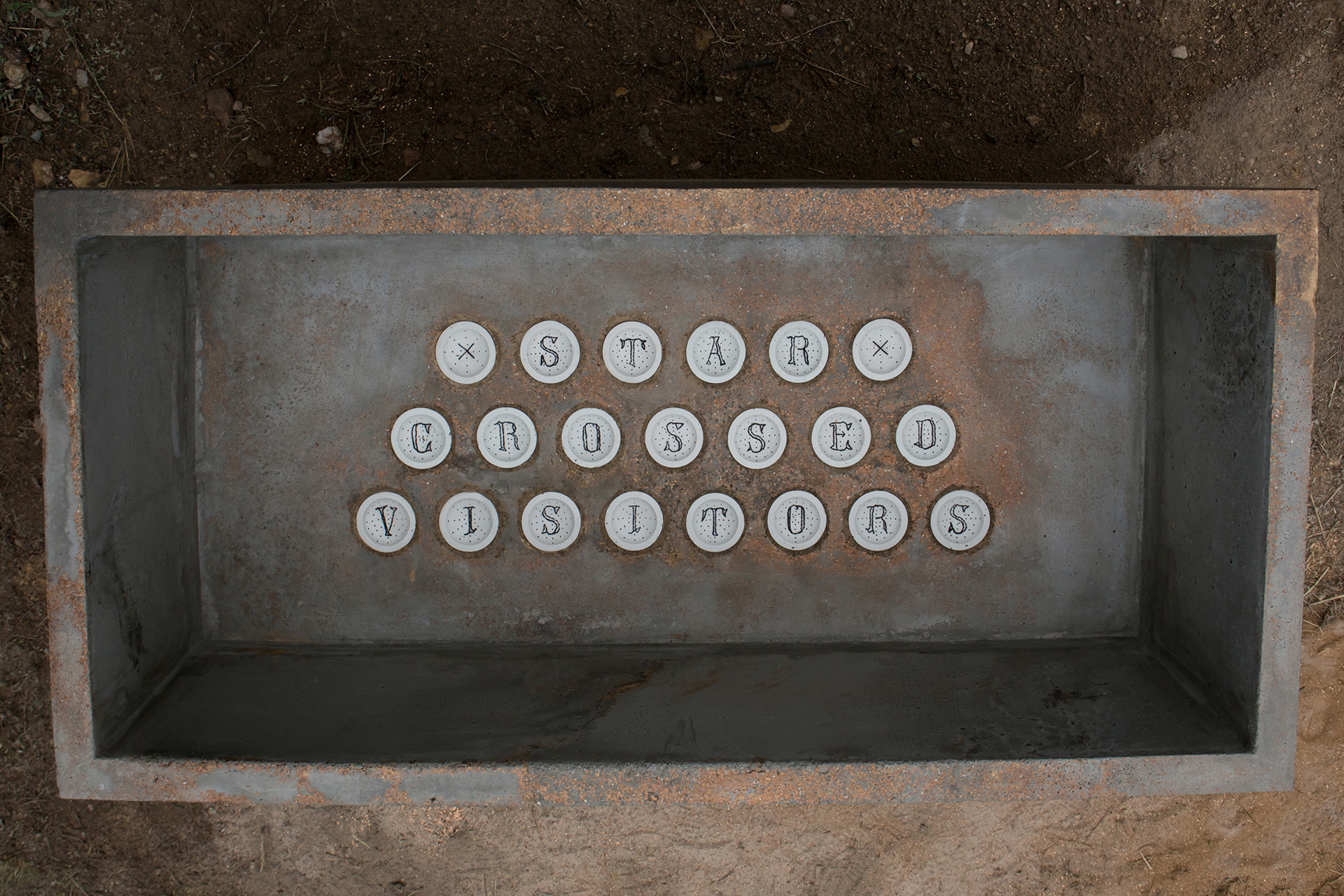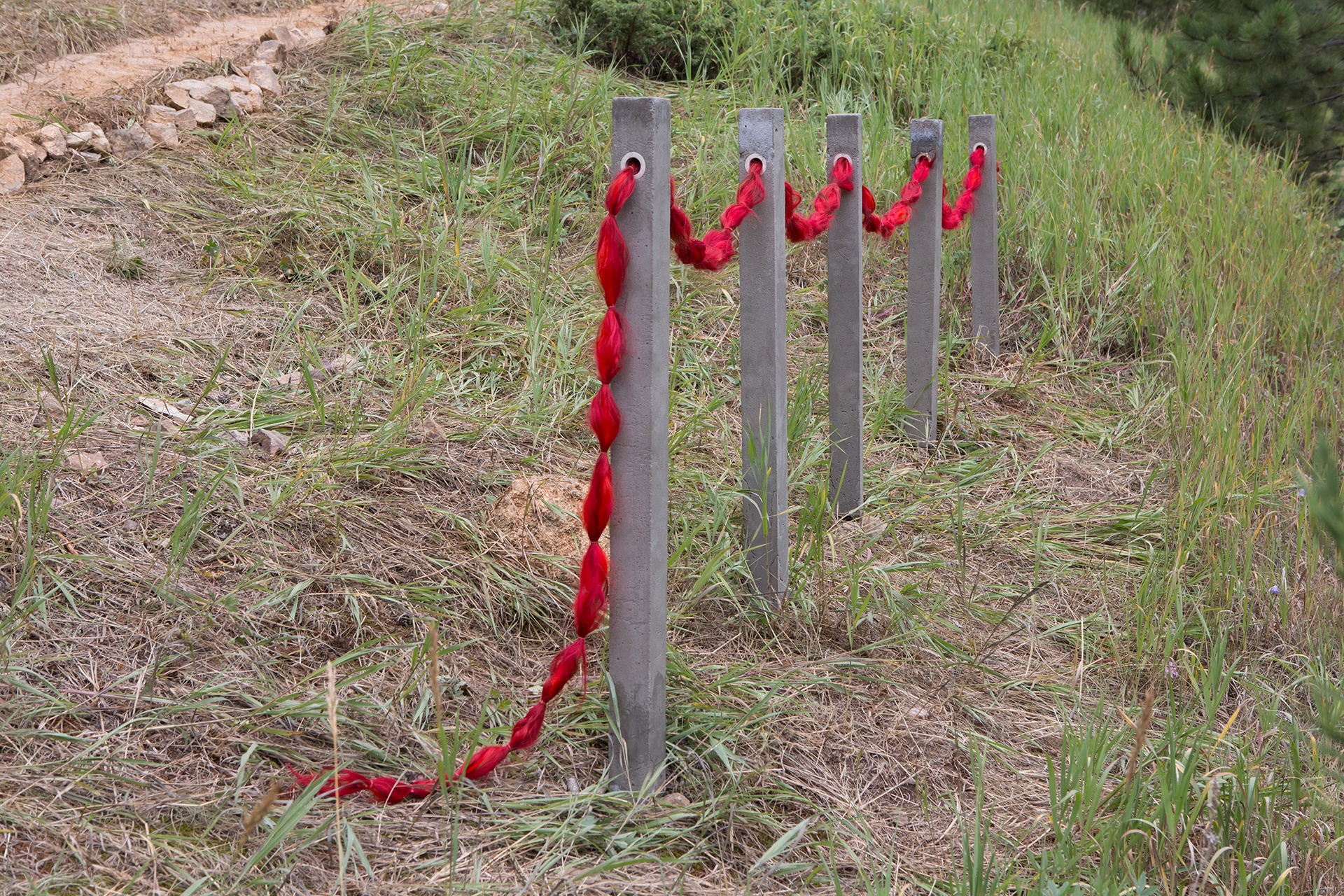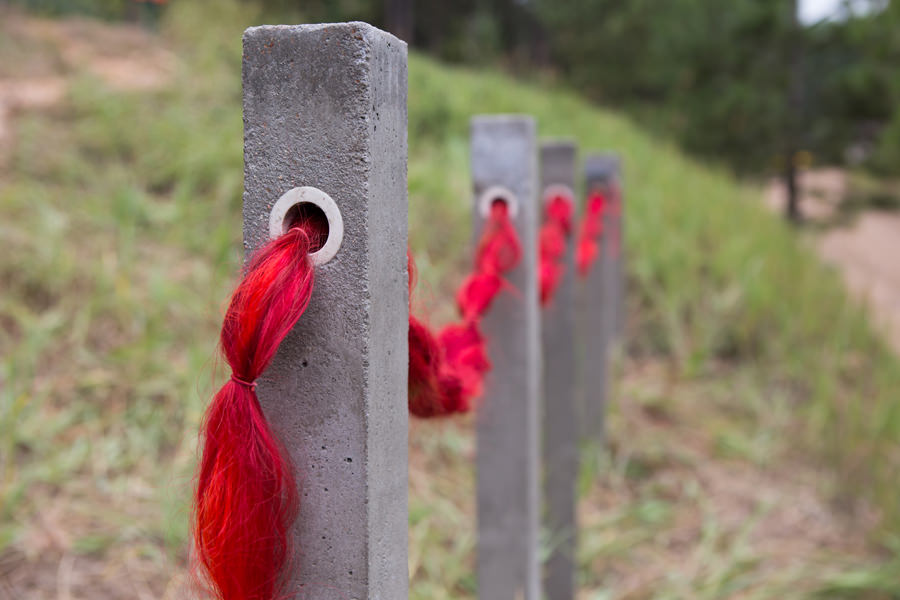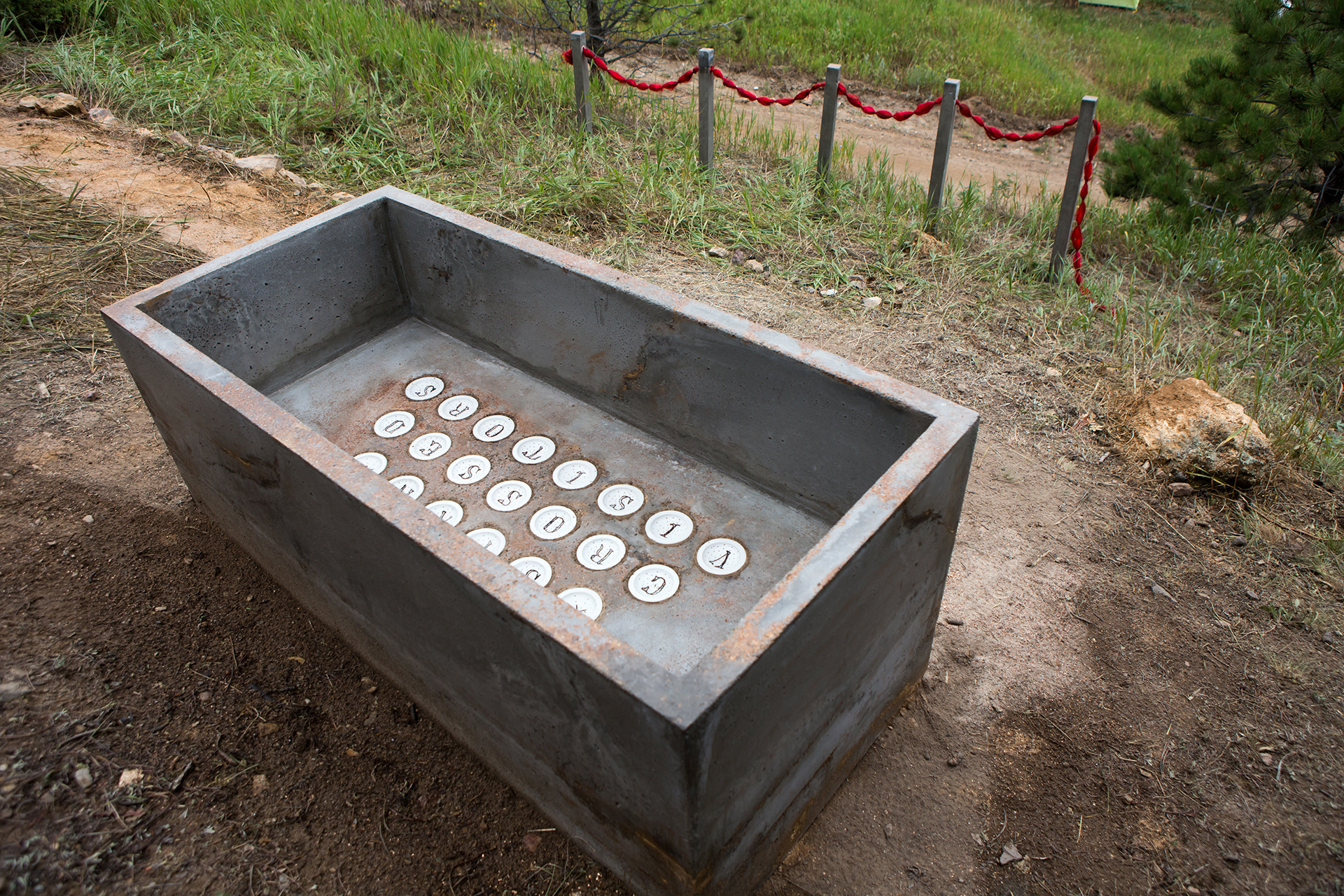Star Crossed Visitors, 2016
“Star Crossed Visitors” was the phrase used to describe Chinese residents deemed foreign to others and forced them to live in neighborhoods of their own people. This fear created the Chinese Exclusion Act of 1882 and was the first significant law restricting a group of people into our country and was not repealed until 1942. This unimaginable act broke families apart, continued xenophobic arguments, and its progressive racism can be seen today in our two Asian Americas – one suppressed by our system and the other somehow deemed the model minority because we have no voice.

The large concrete wash tub and fence rests on a triangular plot of land situated at a cross roads and not far from the Richards Cabin, the original site of a working Chinese laundry house during the Gold Rush. I was particularly drawn to this site because of the two different views the cross roads created. The large concrete tub and hair fence could be seen from the top of the road looking down, providing a sweeping image of the installation and Gold Hill. The other road only provided an above ground glimpse of the installation when the bright red human hair rope stood out against the green landscape.



For the fence in Star Crossed Visitors, the black Asian hair has been bleached to blonde and then dyed a shade of Chinese red. The ten-foot-long ponytail rope is threaded through concrete pillars to form a broken fence. This hair fence connects the sense of loss, displacement, and otherness the Chinese migrants experienced during the Gold Rush.

